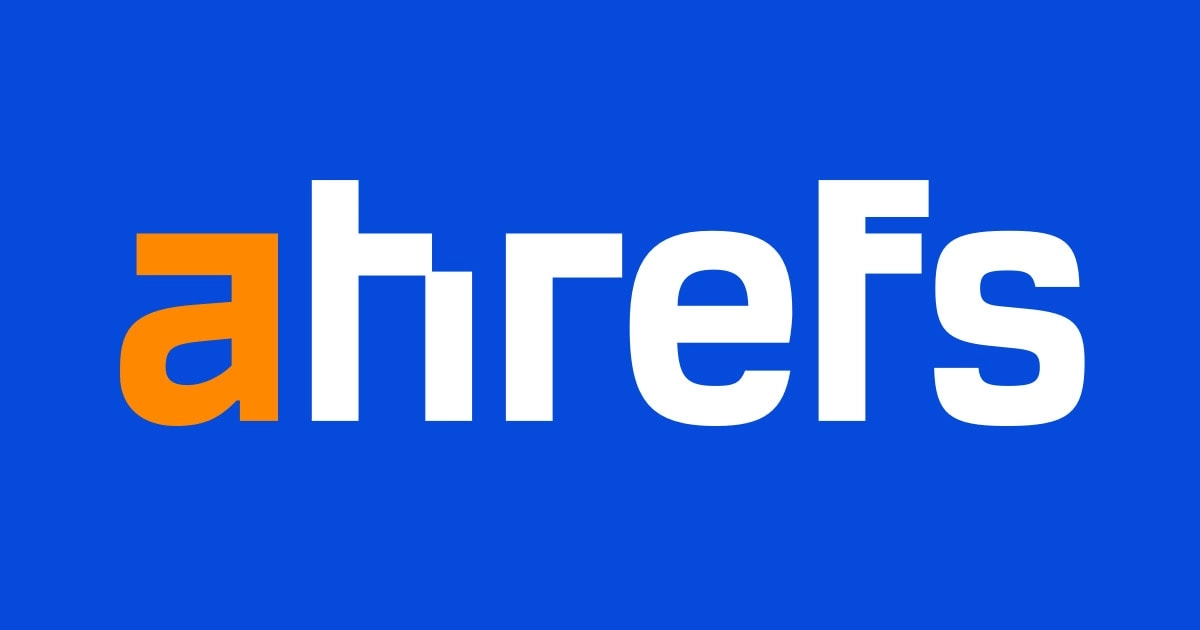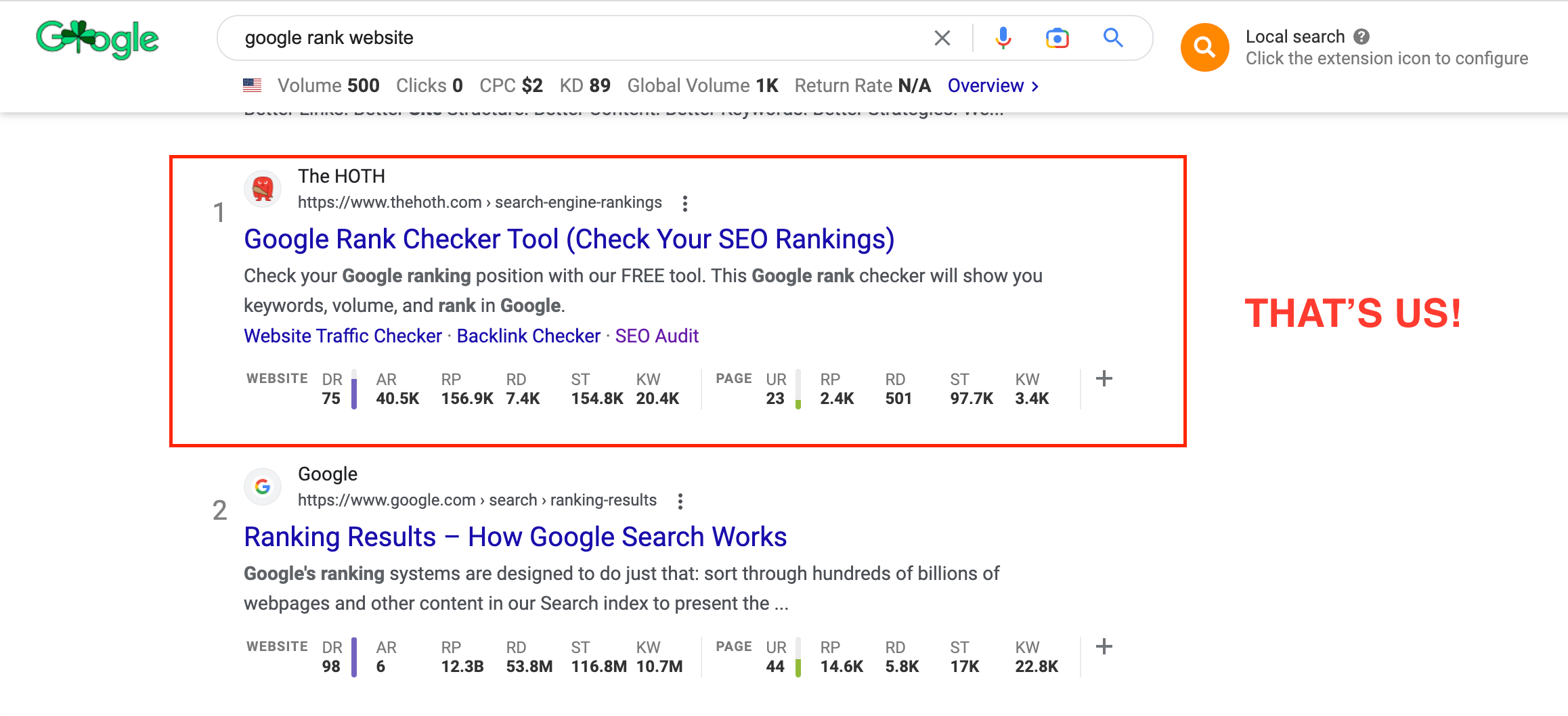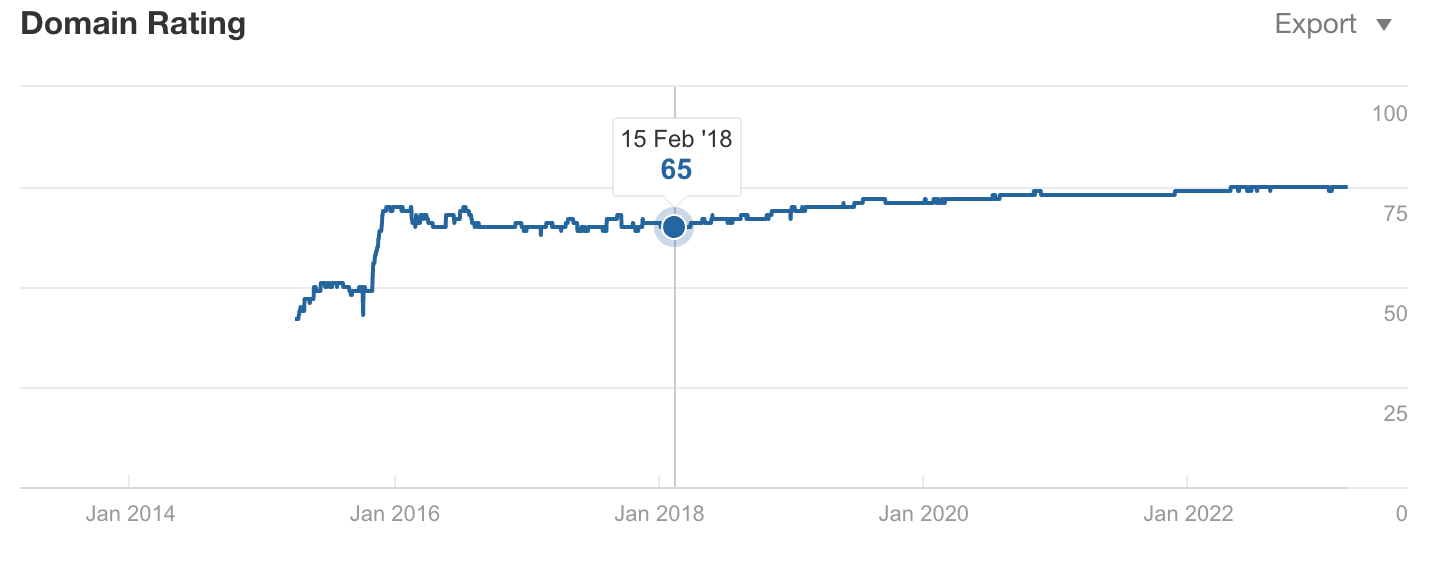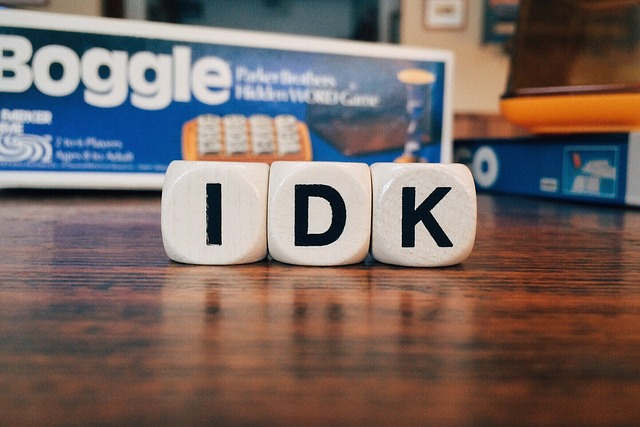In the complex and competitive world of search engine optimization (SEO), understanding the metrics that influence search engine rankings is crucial for businesses and SEO professionals alike.
Two of the most prominent tools used to measure the authority and quality of websites are Moz’s Domain Authority (DA) and Ahrefs’ Domain Rating (DR).
Although both of these tools provide insights into the overall performance of a website, it’s essential to know the differences between them to make well-informed decisions.
…and how they come up short sometimes.
In this blog post, we will dive deep into the key aspects of Moz Domain Authority and Ahrefs Domain Rating, comparing their functionalities and discussing how you can leverage these metrics to bolster your SEO campaigns.
The problem is, these metrics alone are flawed
When you are trying to determine how much other search engines, like Google trust certain websites, it’s useful to use third-party metrics.
This is because Google will never reveal the direct factors that influence ranking websites, so it became necessary for SEOs to create some sort of standard to differentiate the ranking power of a website.
That’s where metrics like Moz’ DA and Ahrefs’ DR come into play. They are wonderful metrics that help us everyday as SEOs
But keep in mind that just like Google, these companies have bots that crawl the internet and collect data from websites and SERPs (search engine result pages).
The crawlers are not perfect nor how DR/DA is calculated.
So until we elaborate on how these scores are calculated and how to responsibly use these metrics to improve your own site’s ranking, take them with a grain of salt:

Domain Authority (DA) – What is it and how is it calculated?
Domain Authority (DA) is calculated by Moz based on a website’s link profile, while also taking into account factors such as the number and quality of links pointing to the site, the age of the domain, and the size of the website.

The score is then presented on a logarithmic scale of 0 to 100.
It was first introduced by Moz in 2004 as a way to predict how well a website would rank in search engine results pages (SERPs).
Clickworks has been around since 2010, so I have witnessed the evolution of Moz DA firsthand.
When Moz first introduced DA, it was a relatively new metric that was not widely adopted by the SEO community.
However, as more and more SEO professionals began to use it, it quickly gained popularity as a useful tool for evaluating the strength of a website’s backlink profile.
Moz DA became a key metric for SEO professionals to use in their link building strategies.
Over the years, Moz has made several updates to the DA algorithm, which has made it a more accurate measure of a website’s authority. In 2011, Moz introduced the concept of “Linking Root Domains,” which meant that links from the same domain were no longer counted multiple times.
This helped to reduce the impact of link spam and made DA a more reliable metric.
In 2015, Moz introduced another major update to the DA algorithm, which incorporated machine learning. This update made the algorithm more sophisticated and better able to distinguish between high-quality and low-quality spam links above.
It also made the algorithm more resistant to manipulation, which further improved its reliability.
Today, Moz DA remains one of the most widely used metrics in the SEO industry.
While it is not a perfect metric by any means and should be used in conjunction with other metrics, it remains a valuable tool for SEO professionals to evaluate the authority of a website and make informed decisions about their link building strategies.
How to increase a website’s Domain Authority (DA)?
As an SEO professional who works for a company that sells backlinks, I understand that backlinks are one of the most important factors that can influence a website’s domain authority.
However, it’s important to note that not all backlinks are created equal, and there are certain strategies that are more effective than others when it comes to increasing domain authority.
Here are some of the best ways to increase a website’s domain authority:
Build high-quality backlinks: As mentioned, backlinks from authoritative sites are crucial to increasing domain authority. However, it’s important to focus on only building links with high-quality backlinks from reputable and relevant websites.
These links should be from sites with a high domain authority themselves. You also want to focus on do follow links, which will give more power to your web pages by passing that sweet old “link juice”.

You can utilize a link-building provider like Clickworks to help with this and scale your SEO campaign, site authority, and, ultimately, your rankings.
Improve on-page optimization: On-page optimization is also an important factor that can influence domain authority. Ensuring that your website has high-quality content, relevant keywords, and a well-optimized site structure can help to improve your website’s domain authority scores.
Remove toxic backlinks: Toxic backlinks can negatively impact your website’s authority, so it’s important to regularly audit your backlink profile and remove any toxic links that could be hurting your website’s authority.
Increase social media engagement: Social media engagement can also play a role in improving your website’s domain rating and authority.
By creating high-quality content and engaging with your audience on social media, you can build a following and increase the visibility of your website, which can ultimately lead to more backlinks and higher domain authority.
Utilize internal linking: Internal linking can also help to improve domain authority by distributing link equity across your website.
By linking to high-quality pages within your own website, you can help to boost their authority, which can in turn improve the authority of your entire website.
When it comes to buying backlinks, it’s important to ensure that you are getting high-quality links that are relevant to the client’s website and are not spammy or low-quality.
Additionally, it’s important to be transparent with clients about the risks and potential downsides of buying backlinks, and to educate them about the importance of building high-quality backlinks naturally.
(If you’re looking for help with this, book a call with me to talk about HOTH Link Outreach.)
What is a good DA score?
A good Domain Authority (DA) score depends on a variety of factors, including the industry, niche, and competition level of the website.
For example, our website, Clickworks.ie, has a DA of 61.

In general, a DA score of 50 or above is considered “good”, while a score of 60 or above is considered excellent.
But what do you actually mean by “good” or “excellent”?
Good question, reader.
DA is a RELATIVE metric, meaning that it should be used to compare websites within the same industry or niche.
Additionally, it’s important to remember that high DA score is just one of many third-party metrics that can gauge how likely a website will rank on search engines.
While a higher DA score can indicate a stronger link profile, it does not guarantee that a website’s pages will rank higher in search results.
Ultimately, the best way to determine whether a website has a good DA score is to compare it to other websites in the same industry or niche and to evaluate its overall link profile and search engine rankings.
What you should actually care about is how you stack against your competitors and where they are relative to your website in the SERPs
After all, that’s what DA was originally created to measure.
How Does Domain Authority (DA) Impact SEO?
While Domain Authority (DA) is a useful metric for evaluating a website’s ability to rank in search engine results pages (SERPs), it’s important to note that DA does not directly impact rankings. Instead, it’s a measurement of the website’s overall authority and link profile, which can influence its ability to rank well in search results.
For example, having a low DA score does not necessarily mean a website won’t rank well in search results.
Think about it like a rookie NFL quarterback making a great play. Just because he is new doesn’t mean it kind wipe the floor with his competitors.

There are many other factors that can impact search engine rankings, such as the relevance and quality of the website’s content, the website’s technical SEO, and the competition level for the targeted keywords.
However, a higher DA score can indicate that a website has a stronger link profile and is more likely to rank well in search results.
This is because search engines view websites with higher authority as more trustworthy and credible, which can lead to better visibility in search results.
Ultimately, while DA is an important metric for evaluating a website’s authority and potential to rank well in search results, it’s just one of many factors that can impact SEO performance.
Businesses should focus on building a strong, high-quality website with relevant, engaging content and a well-optimized technical structure in order to improve their chances of ranking well in search results.
Domain Rating (DR)
Ahrefs DR (Domain Rating) is a metric that measures the authority of a website’s backlink profile on a scale of 0 to 100. It was developed by Ahrefs, a popular SEO tool provider, and was first introduced in 2016 as an alternative to other domain authority metrics like Moz’s Domain Authority.
Ahrefs DR is based on the number and quality of external backlinks pointing to a website. The more high-quality backlinks a website has, the higher its DR score will be.

A website’s DR score is updated on a regular basis to reflect changes in its backlink profile.
Since its introduction, Ahrefs DR has become a popular metric among SEO professionals and website owners for evaluating a website’s link profile and authority.
It’s often used as a benchmark for comparing websites within the same industry or niche, and can be a useful tool for identifying link building opportunities and evaluating the competitiveness of specific keywords, just like DA.
However, again, it’s important to note that Ahrefs DR is just one of many metrics that can be used to evaluate a website’s authority and potential to rank in search results.
While a higher DR score can indicate a stronger link profile, it does not guarantee that a website will rank higher in search results.
Other factors, such as the relevance and quality of the website’s content, the website’s technical SEO, and the competition level for targeted keywords, can also impact SEO performance.

Overall, Ahrefs DR has become a widely-used metric for evaluating a website’s link profile and authority, and has helped many SEO professionals and website owners to improve their search engine rankings and visibility.
How To Increase Domain Rating
As a seasoned SEO professional working for Clickworks, a white-label SEO solutions provider, there are several effective strategies that can be used to increase a website’s Ahrefs DR:
- Create high-quality, relevant content: Creating high-quality, relevant content that provides value to your audience can help to attract natural backlinks from other websites. This can help to improve your website’s authority and increase its Ahrefs DR.
- Build high-quality backlinks: Building high-quality backlinks from authoritative websites in your niche is one of the most effective ways to increase your website’s Ahrefs DR. This can be achieved through tactics such as guest blogging, broken link building, and outreach to other website owners in your industry. Or you can use a paid service like Clickworks to build high-quality backlinks.
- Improve the quality of existing backlinks: It’s not just about the quantity of backlinks, but also the quality. Improving the quality of existing backlinks by removing low-quality or spammy links can help to improve your website’s Ahrefs DR.
- Optimize on-page SEO: Optimizing your website’s on-page SEO, including elements such as meta tags, header tags, and internal linking, can help to improve the relevance and quality of your website’s content, which can in turn improve its authority and chance of generating natural backlinks, and in turn, Ahrefs DR.
- Monitor and track progress: Regularly monitoring your website’s backlink profile and Ahrefs DR can help you to identify areas for improvement and track the effectiveness of your link building and content marketing efforts.
Overall, by implementing these strategies and focusing on building high-quality backlinks, creating valuable content, and optimizing on-page SEO, you can improve your website’s Ahrefs DR and enhance its overall search engine optimization performance.
What is a good Domain Rating (DR)?
A good Domain Rating (DR) will vary depending on the industry and niche of the website. In general, a higher DR score indicates a stronger link profile and more authoritative website, which can lead to better visibility and higher search engine rankings.
According to Ahrefs, a DR score of 50 or above is considered to be strong, while a score of 60 or above is considered to be excellent.
However, it’s important to note that DR is just one metric among many that can be used to evaluate a website’s authority and potential to rank in search results.
Other factors, such as the relevance and quality of the website’s content, the website’s technical SEO, and the competition level for targeted keywords, can also impact SEO performance.
Therefore, it’s important to use DR as a benchmark for comparing websites within the same industry or niche, rather than as an absolute measure of a website’s overall authority. Ultimately, the goal should be to continually improve a website’s link profile and authority over time, regardless of its current DR score.
How Does Domain Rating (DR) Impact SEO?
While DR doesn’t directly impact SEO, it can be a useful tool for evaluating a website’s potential to rank in search engine result pages (SERPs).
A higher DR score generally indicates a stronger link profile, which can improve a website’s search engine visibility and rankings.
Other important factors that impact SEO include the relevance and quality of a website’s content, its technical SEO, user experience, and the competition level for targeted keywords.
Therefore, while a higher DR score can be a positive indicator of a website’s authority and potential to rank, it’s not a guarantee of success in search engine rankings.
For example, Google.com itself has a much higher DR than Clickworks.ie, but we are outranking them for keywords like “google rank website”

In order to improve a website’s SEO performance, it’s important to focus on a holistic approach that includes creating high-quality, relevant content, building a strong link profile, optimizing for technical SEO factors, and providing a positive user experience for visitors.
The difference between DA vs DR
Many people use the terms Domain Authority and Domain Rating interchangeably, but they are two very different metrics from two different companies.
Domain Authority (DA) and Domain Rating (DR) are both metrics used to evaluate the authority of a website, but they are calculated differently.
DA is a metric developed by Moz that measures the overall authority of a website based on its link profile.
DA is calculated by evaluating factors such as the number and quality of links pointing to a website, as well as other factors such as the age of the domain and the size of the website. DA is calculated on a scale of 0 to 100, with higher scores indicating a stronger link profile and more authoritative website.
DR, on the other hand, is a metric developed by Ahrefs that measures the strength of a website’s backlink profile on a scale of 0 to 100.
DR is calculated based on the number and quality of backlinks pointing to a website, as well as other factors such as the diversity of the backlink profile and the strength of the referring domains.
While both metrics are used to evaluate a website’s authority, they are calculated differently and can sometimes provide different results.
For example, a website may have a high DR score but a lower DA score, or vice versa, depending on the specific factors used in each calculation.
It’s important to use both metrics in conjunction with other SEO factors to gain a more complete picture of a website’s authority and potential to rank in search engine results pages.
Similarities Between Domain Rating vs Domain Authority
Your domain authority score and domain rating might have a correlation, but the odds of them being the exact same is pretty small. As discussed, they are calculated very differently.
That being said, there are some similarities.
1) BOTH DA and DR are relative metrics based on the entire databases that Moz and Ahrefs have, meaning it’s important to note that a change in other websites’ DA and DR can have an effect on your DA and DR as well.
For example, if Facebook.com were to get a billions of new backlinks, the DA/DR of every other website would drop in relation to Facebook’s DA/DR.
2) Neither are direct ranking factors as previously discussed in this article.
3) They are on logarithmic scales. This means it’s harder to get from a DA 50 to DA 260 compared to going from a DA 10 to Da 20.
Under the Hood: How Moz Domain Authority and Ahrefs Domain Rating are Calculated
Let’s take a look under the hood to see how these metrics are calculated.

Moz Domain Authority is based on a machine-learning model that considers over 40 factors, such as the number of total backlinks, the quality of backlinks, and the overall linking root domains.
This information is used to calculate the likelihood of a website’s ranking potential.
It’s important to note that Moz DA is a relative metric, meaning that it should be used for comparing websites against each other rather than aiming for a specific score.
Ahrefs Domain Rating, on the other hand, primarily focuses on a website’s backlink profile. The metric takes into account the number of other unique domains’ backlinks, the quality of linking websites, and the overall strength of the site’s backlink profile.
Like Moz DA, Ahrefs DR is also a relative metric, and should be used to gauge the performance of websites against competitors.
Applications: How to Use Moz Domain Authority and Ahrefs Domain Rating
Both Moz DA and Ahrefs DR can be used to perform competitor analysis and identify potential backlink opportunities.
By comparing your website’s own DA scores or DR against the scores of your competitors, you can gauge your website’s performance and identify areas for improvement.
Back in 2018, we started making even more of a coordinated effort to work on our DR:

Now in 2023, we are at at 75 and still growing:

The point I’m trying to make here is that these metrics are a great tool, but don’t obsess and be patient.
Additionally, these metrics can help you uncover high-authority websites in your niche, presenting opportunities to build high-quality backlinks and improve your search engine rankings.
Limitations: What Moz Domain Authority and Ahrefs Domain Rating Don’t Tell You
It’s important to remember that both Moz DA and Ahrefs DR are third-party metrics and do not directly influence search engine rankings.
Furthermore, these metrics only provide a partial view of a website’s SEO performance, meaning other factors such as on-page optimization, content quality, and user engagement should not be ignored.
While it’s useful to know your website’s DA or DR score, obsessing over these numbers can be counterproductive.
Instead of aiming for a higher score, focus on building a diversified and high-quality backlink profile that caters to your target audience and drives your organic traffic growth.
In other words…
Neither Is a Direct Ranking Factor
As mentioned earlier, Domain Authority and Domain Rating are both third-party metrics developed for SEOs in order to measure how strong a website’s popularity is in Search Engine’s eyes in comparison to other websites.
So take them with a grain of salt, please. I gave you some earlier in this post.
Most SEOs who have been in the game for a while care about much more than these metrics.
Think about it, Google has thousands of ranking factors that are not available to the public eye. There is no way that one (or two metrics) developed by a third-party can 100% accurately replicate how strong a website is and how likely it will show up in the SERPs.
Confusions Regarding These Third-Party Metrics
Here are some common confusions regarding Domain Rating (DR) and Domain Authority (DA):
Confusing DR and DA: Many people confuse DR and DA, thinking they are the same metric. While they are both used to evaluate a website’s authority, they are calculated differently and can sometimes provide different results.
Believing that DA and DR directly impact SEO rankings: While DR and DA can be useful metrics for evaluating a website’s authority and potential to rank, they do not directly impact SEO rankings.
There are many other factors that impact SEO performance, such as the relevance and quality of a website’s content, technical SEO, user experience, and the competition level for targeted keywords.
Focusing too much on DR or DA: Some people focus too much on DR or DA as the sole measure of a website’s authority and potential to rank.
While these metrics can be helpful, they should be used in conjunction with other SEO factors to gain a more complete picture of a website’s authority and potential to rank.
Assuming that a high DR or DA score guarantees success: While a high DR or DA score can be a positive indicator of a website’s authority, it does not guarantee success in search engine rankings.
SEO success requires a holistic approach that includes creating high-quality, relevant content, building a strong link profile, optimizing for technical SEO factors, and providing a positive user experience for visitors.
You know what they say about assuming:

Not understanding how DR or DA are calculated: Many people do not fully understand how DR or DA are calculated, leading to confusion about what these metrics represent and how they should be used.
It’s important to have a clear understanding of how these metrics are calculated and what factors are included in the calculation to use them effectively.
🧐 Looking beyond DA and DR
Alright, so you might be thinking:
“Jake, you just told me these are great metrics to use as tools, but you also said they are flawed. So what actually matters for SEO?”
Great question. I can’t say for sure.
No one can.

Besides an event like the Yandex leak that happened in early 2023, we don’t have much insight into EXACTLY what exact ranking factors are and how much they actually influence rankings.
The original purpose of DA was to measure how a website stacks up against its competitors and where it ranks relative to them in the SERPs. Therefore, it is important to focus on this aspect rather than solely on your own DA score.
That’s why through testing and observing data and trends, we use tools like DA and DR to improve the functionality of the internet by creating useful, intuitive and accessible content to connect searchers with information and businesses that offer solutions to their queries.
That’s what being a real SEO is all about.
So besides DA and DR, what other metrics can we use to determine if search engines like a website?
Well, an easy one is the amount of traffic that Search Engines actually send to that website monthly.
Think about it.
If Google is showing a website for users in search results and people are visiting that website, that’s a pretty good clue that Google likes the website and its content.
So, it makes sense that a backlink from that site to yours would help Google view your website as more authoritative and trustworthy, right?
That’s why we also provide our link outreach product based on the minimum amount of estimated organic traffic a domain gets.
The Bigger Picture: Integrating Moz Domain Authority and Ahrefs Domain Rating into Your SEO Strategy
Both Moz DA and Ahrefs DR are valuable tools that can help you understand the performance of your website and identify opportunities for improvement. To effectively harness their potential, align these metrics with your overall SEO strategy, consider other key SEO factors, and stay up-to-date with industry trends and algorithm updates.
DA Vs DR: Final Thoughts
Moz Domain Authority and Ahrefs Domain Rating are powerful tools that offer insights into the authority, performance, and backlink profile of a website.
But by no means are they an end-all, be-all of how search engines prefer websites.
By understanding the differences between these metrics, you can make informed decisions that will help elevate your website’s SEO performance.
Remember to view these metrics as just one piece of the larger SEO puzzle and pair them with a comprehensive, ongoing SEO strategy to truly unlock your website’s ranking potential.
And if you need help from an expert in scaling your link-building strategy, book a call with me today.








